Ba5.4
Thus we can now perceive how the 'Claws' of the Libra Balance
may have influenced the design of the peculiar glyphs after the
21h culmination of Porrima:
 |
 |
 |
 |
 |
 |
|
Ba5-1
(165) |
Ba5-2 |
Ba5-3 |
Ba5-4 (168) |
Ba5-5
(240 - 71) |
Ba5-6 |
|
Rere toki |
kua huki ko te nuku |
kua tere ko te toki -
toki te henua |
e kua
rere toki |
ki te viriga |
o tona henua |
|
Tere.
1. To run, to flee, to escape from a
prison. 2. To sail a boat (also: hakatere);
tere vaka, owner of a fishing boat.
3. (Deap-sea) fisherman; tere kahi,
tuna fisherman; tere ho'ou, novice
fisherman, one who goes deap-sea fishing for
the first time. Penei te huru tûai;
he-oho te tere ho'ou ki ruga ki te
hakanonoga; ana ta'e rava'a, he-avai e te
tahi tagata tere vaka i te îka ki a îa mo
hakakoa, mo iri-hakaou ki te hakanonoga i te
tahi raá. The ancient custom was like
this: the novice fisherman would go to a
hakanonoga; if he didn't catch anything,
another fisherman would give him fishes to
make him happy so he'd go again one day to
the hakanonoga (more distant fishing
zones where larger fishes are found).
Vanaga. To depart, to run, to take leave, to
desert, to escape, to go away, to flee,
fugitive, to sail, to row, to take refuge,
to withdraw, to retreat, to save oneself;
terea, rest, defeat; tetere, to
beat a retreat, to go away, refugee;
teretere, to go away, hurrah;
hakatere, to set free, to despatch, to
expel, to let go, to liberate, to conquer,
helmsman; terega, departure, sailing;
teretai, a sailor. Churchill.
Vere.
1. Beard, moustache (vede G);
vere gutu, moustache; verevere,
shaggy, hairy, tow, oakum. Mgv.: veri,
bristly, shaggy, chafed (of a cord long in
use). Mq.: veevee, tentacles. Ta.:
verevere, eyelash. 2. To weed (ka-veri-mai,
pick, cut-grass T); verevere, to
weed. P Mgv.: vere, to weed. Mq.:
veéveé, vavee, id. 3. Verega,
fruitful, valuable; verega kore,
unfruitful, valueless, contemptible, vain,
futile, frivolous; tae verega,
insignificant, valueless; mataku verega
kore, scruple. Mgv.: verega, a
design put into execution; one who is apte,
useful, having a knowledge how to do things.
4. Ta.: verevere, pudenda muliebria.
Ma.: werewere, id. (labia minora).
Churchill. Sa.: apungaleveleve,
apongaleveleve, a spider, a web. To.:
kaleveleve, a large spider. Fu.:
kaleveleve, a spider, a web. Niuē:
kaleveleve,
a cobweb. Nukuoro: halaneveneve,
a spider. Uvea: kaleveleve,
a spider. Mgv.: pungaverevere,
a spider. Pau.: pungaverevere,
cloth. Mg.: pungaverevere,
a cobweb. Ta.: puaverevere,
id. Mao.: pungawerewere,
puawerewere,
puwerewere,
a spider. Ha.: punawelewele,
a spider, a web. Mq.: pukaveevee,
punaveevee,
id. Vi.: lawa,
a fishing net; viritālawalawa,
a cobweb; butalawalawa,
a spider. Churchill 2.
Viri.
1. To wind, to coil, to roll up; he
viri i te hau, to wind, coil a string
(to fasten something). 2. To fall from a
height, rolling over, to hurl down, to fling
down. Viriviri, round, spherical
(said of small objects). Viviri te
henua, to feel dizzy (also: mimiro te
henua). Vanaga. To turn in a circle, to
clew up, to groom, to twist, to dive from a
height, to roll (kaviri). Hakaviri,
crank, to groom, to turn a wheel, to
revolve, to screw, to beat down; kahu
hakaviri, shroud. Viriga,
rolling, danger. Viriviri, ball,
round, oval, bridge, roll, summit, shroud,
to twist, to wheel round, to wallow.
Hakaviriviri, to roll, to round; rima
hakaviriviri, stroke of the flat,
fisticuff. P Pau.: viriviri, to
brail, to clew up; koviriviri,
twisting. Mgv.: viri, to roll, to
turn, to twist; viviri, to fall to
the ground again and again in a fight. Mq.:
vii, to slide, to roll, to fall and
roll. Ta.: viri, to roll up, to clew
up. Viritopa, danger. Mgv.:
Viripogi, eyes heavy with sleep. Mq.:
viipoki, swooning, vertigo. Churchill.
Viti: vili, to pick up fallen fruit
or leaves ... In Viti virimbai has
the meaning of putting up a fence (mbai
fence); viri does not appear
independently in this use, but it is
undoubtedly homogenetic with Samoan vili,
which has a basic meaning of going around;
virikoro then signifies the
ring-fence-that-goes-about, sc. the moon. In
the Maori, aokoro is the cloud-fence
... Churchill 2. |
|
May 16
(136) |
17 |
18 (74 + 64) |
19 |
20 (*425) |
21 (141) |
|
MARCH 13 |
3-14 |
15 (74 =
58 + 16) |
16 |
(*361 =
19 * 19) |
18 (442 = 77) |
|
Hairy Head-18 (Cockerel) /
Temennu-3 (Foundation Stone)
ALCYONE
(56.1),
PLEIONE (28 Tauri), ATLAS (27 Tauri)
(56.3) |
MENKHIB (Next to the Pleiades) =
ζ
Persei
(57.6)
PORRIMA (γ Virginis) |
ZAURAK (Boat) = γ Eridani
(58.9) |
λ Tauri (59.3), ν Tauri (59.9) |
4h (60.9)
JĪSHUĬ = λ Persei
(60.7)
COR CAROLI (α Canum Ven.) |
υ Persei
(61.2) |
|
κ
Serpentis (239.3),
δ
Cor. Borealis,
TIĀNRŪ =
μ
Serpentis
(239.5),
χ
Lupi, (239.6),
ω
Serpentis (239.7),
BA (= Pa) =
ε
Serpentis,
χ
Herculis (239.8).
κ
Cor.
Borealis, ρ Serpentis (239.9) |
λ
Librae (240.0),
β
Tr. Austr. (240.3),
κ
Tr. Austr. (240.4),
ρ
Scorpii (240.8)
*199.0 = *240.4 - *41.4 |
Iklīl al Jabhah-15 (Crown of the Forehead)
/
Anuradha-17 (Following Rādhā) /
Room-4 (Hare) /
Bighanwand
(Clawless)
ξ
Lupi,
λ
Cor. Bor.(241.1),
ZHENG =
γ
Serpentis,
θ
Librae (241.2),
VRISCHIKA = π Scorpii
(241.3),
ε
Cor.
Borealis (241.5),
DSCHUBBA
(Front of Forehead) = δ Scorpii
(241.7), η Lupi (241.9) |
υ
Herculis (242.3),
ρ
Cor. Borealis (242.4),
ι
Cor. Borealis (242.5),
θ
Draconis (242.6),
ξ
Scorpii (242.7)
SCHEDIR (Breast) α Cassiopeiae
*201.0 = *242.4 - *41.4 |
16h (243.5)
ACRAB (Scorpion) = β Scorpii,
JABHAT AL ACRAB (Forehead of the Scorpion) =
ω Scorpii
(243.3), θ Lupi,
RUTILICUS = β Herculis
(243.5),
MARFIK (Elbow) = κ Herculis
(243.7), φ Herculis (243.8) |
ψ
Scorpii (244.6),
LESATH (Sting) =
ν
Scorpii
(244.8) |
|
CLAWLESS |
|
Nov 15 |
16 |
17 (321 =
3 * 107) |
18 (*242 = 2 * 121) |
19 |
20 (324 =
3 * 108) |
|
SEPT 12 |
13 |
(*177 = 6
* 29½) |
(*178 =
*242 - *64) |
16 |
17 (260) |
Day 168 counted from Haedus I (*75) = *242, where
the Breast of Cassiopeia culminated (at 21h),
i.e. in November 18 (322).
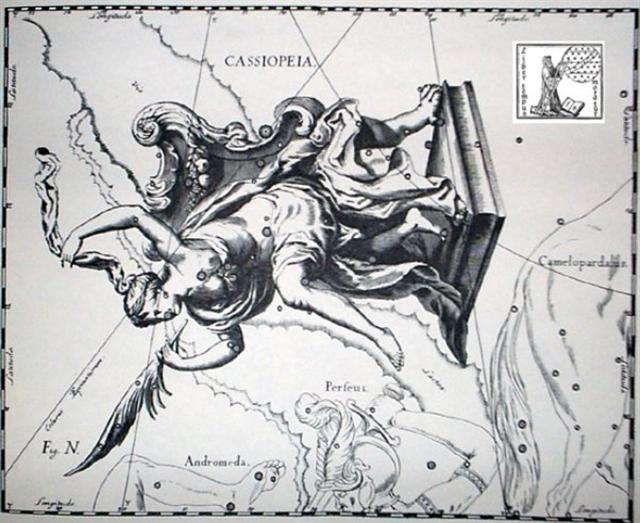
This day we should recall from the view on
Hawaii, because 322 + 33 = 355 (December 21,
solstice):
... in the ceremonial course of
the coming year, the king is symbolically transposed
toward the Lono pole of Hawaiian divinity ...
It need only be noticed that the renewal of kingship
at the climax of the Makahiki coincides with
the rebirth of nature. For in the ideal ritual
calendar, the kali'i battle follows the
autumnal appearance of the Pleiades, by thirty-three
days - thus precisely, in the late eighteenth
century, 21 December, the winter solstice. The king
returns to power with the sun. Whereas, over the
next two days, Lono plays the part of the
sacrifice. The Makahiki effigy is dismantled
and hidden away in a rite watched over by the king's
'living god', Kahoali'i or
'The-Companion-of-the-King', the one who is also
known as 'Death-is-Near' (Koke-na-make).
Close kinsman of the king as his ceremonial double,
Kahoali'i swallows the eye of the victim in
ceremonies of human sacrifice ...
At a winter solstice there is a 'change of sex' -
the Sun has descended to his point of nadir and then
he will like a rubber ball bounce back again into rising
anew.

The Arabs evidently indicated this type of
phenomenon at Cancer, where a change of direction
was illustrated at
8h:
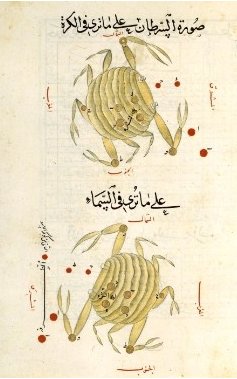
Also Cancer had claws. 8h (Ga2-27) - 4h (Ba5-5)
= 4h (= 4 * 60 min). 60 was the number
corresponding to 10 for the Babylonians.
|
MAY
15 |
16
(136) |
17 |
18 (*58) |
19 |
20 |
 |
 |
 |
 |
 |
 |
|
Ga2-25 (55) |
Ga2-26 |
Ga2-27
→
π |
Ga2-28 |
Ga2-29 |
Ga3-1
(60) |
|
SOLSTICE |
'June
22 (173) |
23 |
ST
JOHN'S DAY |
25 (*96) |
26 |
|
DRUS (Hard) = χ Carinae
(119.9) |
ω Cancri (120.2) |
8h (121.7)
χ
Gemini (121.0),
NAOS (Ship) =
ζ
Puppis
(121.3) |
ρ
Puppis (122.0),
HEAP OF FUEL =
μ
Cancri
(122.1),
ζ
Monocerotis (122.3), ψ
Cancri (122.6),
REGOR (Roger backwards) = γ Velorum
(122.7) |
TEGMINE (The Cover) = ζ Cancri
(123.3) |
AL TARF (The End) = β Cancri
(124.3)
RAS ALGETHI (α Herculis)
|
|
ι Sagittarii (301.2),
TEREBELLUM = ω Sagittarii,
ξ Aquilae (301.3),
ALSHAIN (Falcon) = β Aquilae
(301.6), φ Aquilae (301.8) |
ε Pavonis, θ Sagittarii (302.3), γ
Sagittae (302.5), μ Pavonis (302.7) |
τ Aquilae
(303.8 |
20h (304.4)
304.4 = 118.4 + 186.0
η Sagittae (304.2),
δ Pavonis (304.4)
*263.0 = *77.0 + *186.0 |
SHANG WEI (Higher Guard) =
κ
Cephei
(305.2),
θ
Sagittae (305.4), TSEEN FOO (Heavenly
Raft) =
θ
Aquilae (Ant.)
(305.6), ξ Capricorni (305.8)
*264.0 = *305.4 - *41.4 |
TSO KE (Left Flag) =
ρ
Aquilae
(306.3) |
|
SOLSTICE |
'Dec 22 |
23
(357) |
CHRISTMAS EVE |
25 |
26 (*280) |
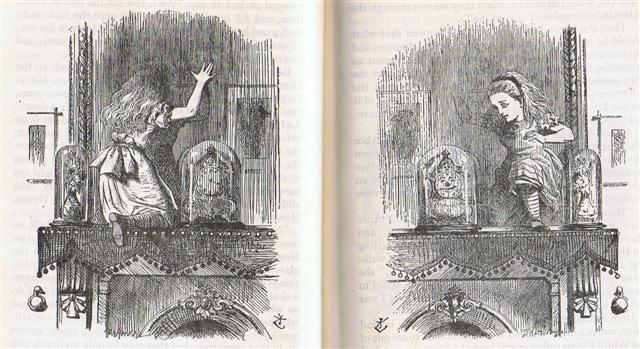 |
Regor = Roger spelled backwards can be
understood as a sign
of how in Cancer there was a place of
re-turning:
... Men's spirits were
thought to dwell in the Milky Way between
incarnations. This conception has been handed
down as an Orphic and Pythagorean tradition
fitting into the frame of the migration of the
soul. Macrobius, who has provided the broadest
report on the matter, has it that souls ascend
by way of Capricorn, and then, in order to be
reborn, descend again through the 'Gate of
Cancer'. Macrobius talks of signs; the
constellations rising at the solstices in his
time (and still in ours) were Gemini and
Sagittarius: the 'Gate of Cancer' means Gemini
...

... Three stones are needed
in order to keep a fire for cooking, and the
form of the Cancer constellation looks like the
Greek letter lambda, but also as the Chinese
sign for Man. What distinguishes the human
creature from all the rest is the ability to use
fire ...
... Gamma Velorum (γ
Vel,
γ
Velorum) is a star system in the constellation
Vela. At magnitude +1.7, it is one of the
brightest stars in the night sky. It has the
traditional names Suhail and Suhail al
Muhlif, which confusingly also apply to
Lambda Velorum. It also has a more modern
popular name Regor, which was invented as
a practical joke by the Apollo 1 astronaut Gus
Grissom for his fellow astronaut Roger Chaffee.
Due to the exotic nature of its spectrum (bright
emission lines in lieu of dark absorption lines)
it is also dubbed the 'Spectral Gem of Southern
Skies' ...
|
SUHAIL AL MULIF |
|
γ |
λ |
|
Regor |
Roger |
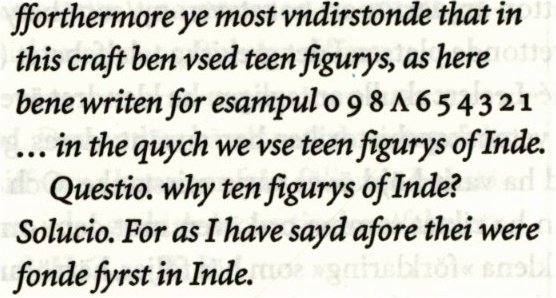
... And then she looked in
her hand, she inspected it right away, but the
bone's saliva wasn't in her hand. It is just a
sign I have given you, my saliva, my spittle.
This, my head, has nothing on it - just bone,
nothing of meat. It's just the same with the
head of a great lord: it's just the flesh that
makes his face look good. And when he dies,
people get frightened by his bones. After that,
his son is like his saliva, his spittle, in his
being, whether it be the son of a lord or the
son of a craftsman, an orator.
The father does not
disappear, but goes on being fulfilled. Neither
dimmed nor destroyed is the face of a lord, a
warrior, craftsman, an orator. Rather, he will
leave his daughters and sons. So it is that I
have done likewise through you. Now go up there
on the face of the earth; you will not die. Keep
the word. So be it, said the head of One and
Seven Hunaphu - they were of one mind when they
did it ...
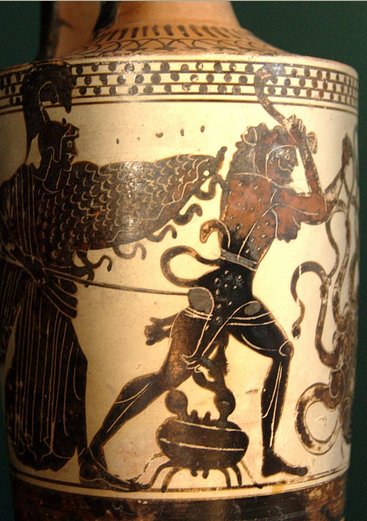
|










